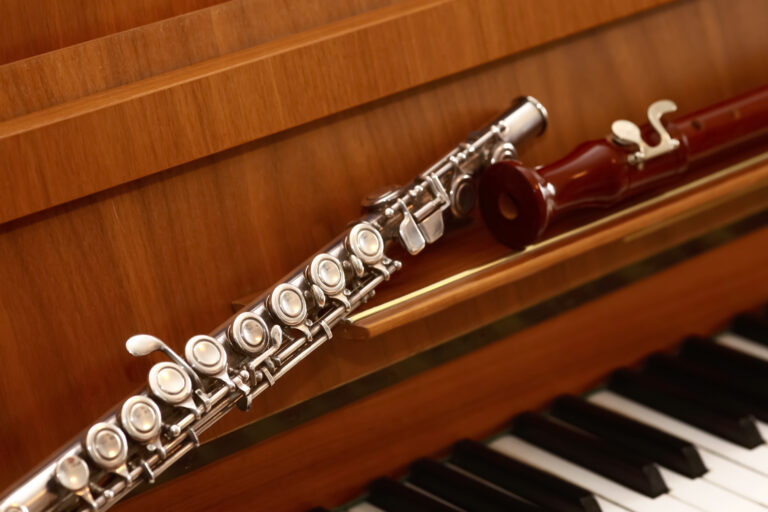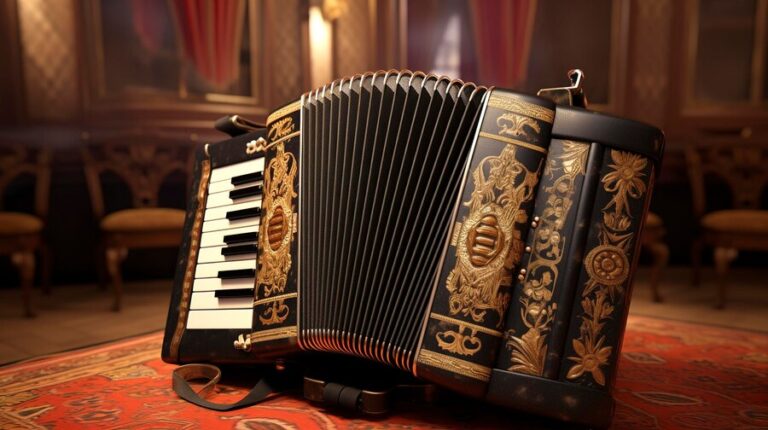Keys of Contention: Exploring the Battle of Piano vs. Keyboard
When it comes to creating music, one of the most important decisions you’ll make is choosing the right instrument. If you’re just starting out, you may be wondering if there’s any real difference between a piano and a keyboard. After all, they both have keys and produce musical notes. However, there are some key differences between the two that you should be aware of before making your decision.

First and foremost, the biggest difference between a piano and a keyboard is the way they produce sound. Pianos use hammers to strike strings, which creates a rich, resonant tone. Keyboards, on the other hand, use electronic circuitry to produce sound, which can be adjusted to mimic different instruments and effects. This means that while a keyboard can be a versatile tool for creating a wide range of sounds, it may not have the same depth and richness of tone as a piano.
Historical Evolution

Origins of the Piano
The piano has a rich history dating back to the early 18th century. Bartolomeo Cristofori is credited with inventing the first piano in Italy around 1700. He called it the pianoforte, which means “soft-loud” in Italian. The pianoforte was an improvement on the harpsichord, which could only play at a single volume.
The early pianos had a smaller range of keys than modern pianos and were not as loud. However, they had a more expressive range of dynamics, which allowed for greater musical expression. Over time, the piano became a popular instrument for composers and performers alike.
Development of Keyboards
The keyboard is a much broader category of instruments that includes the piano, as well as other instruments such as the organ, harpsichord, and synthesizer. Keyboards have been around for centuries, with the first keyboard instrument, the hydraulis, dating back to ancient Greece.
The development of the keyboard instrument continued throughout the Middle Ages and Renaissance, with the harpsichord becoming a popular instrument in the Baroque era. The organ also became a popular instrument during this time, with large, complex organs being built in churches and cathedrals.
In the 20th century, electronic keyboards and synthesizers were developed, which allowed for a wider range of sounds and effects. These instruments have become popular in many genres of music, from pop to rock to jazz.
Overall, while there are similarities between pianos and keyboards, there are also significant differences in their history, construction, and sound. Understanding these differences can help you choose the instrument for your musical needs.
Physical Differences

Size and Portability
One of the most noticeable differences between a piano and a keyboard is their size and portability. Pianos are typically large, heavy instruments that are not easy to move around. They take up a lot of space and require a dedicated room or area for their placement. On the other hand, keyboards are much smaller and more portable. They can be easily transported to different locations and can be stored in a more compact space.
Hammer Mechanism
Another significant difference between a piano and a keyboard is the hammer mechanism. Pianos use hammers to strike the strings, which produces the sound. The keys on a piano are weighted and require more force to press down, which makes it easier to control the volume and tone of the notes played. In contrast, keyboards use electronic sensors to produce sound, which makes them much lighter and easier to play. However, this can also result in a less authentic sound compared to a piano.
Pedals
Pedals are another physical difference between pianos and keyboards. Pianos have three pedals, which are used to sustain notes, soften notes, and produce a louder sound. Keyboards typically have one or two pedals, which are used to sustain notes and produce a softer sound. The lack of a third pedal on keyboards can make it more difficult to produce a range of dynamics and tonal variations in music.
Overall, the physical differences between pianos and keyboards are significant and can impact the playing experience. While pianos offer a more authentic sound and feel, keyboards provide more portability and convenience.
Sound and Tone Quality

Acoustic Versus Electronic Sound
One of the main differences between a piano and a keyboard is the way they produce sound. A piano produces sound acoustically, meaning that the sound is created by vibrating strings that are struck by hammers. On the other hand, a keyboard produces sound electronically, meaning that the sound is created by electronic circuits and speakers.
Because of this difference in sound production, pianos generally have a richer and more complex sound than keyboards. This is because the sound produced by a piano is affected by many factors such as the size and shape of the room, the materials used to construct the piano, and the way the strings are struck. In contrast, the sound produced by a keyboard is more consistent and can be adjusted using various settings.
Polyphony and Voices
Another difference between pianos and keyboards is the number of voices and polyphony they offer. Polyphony refers to the number of notes a keyboard or piano can play at the same time. Pianos generally have a polyphony of 88, which means that they can play all 88 keys at the same time. In contrast, keyboards can have a polyphony ranging from 32 to 256, depending on the model and brand.
In terms of voices, pianos generally have only one voice, which is the sound of the piano itself. In contrast, keyboards can have multiple voices, which means that they can produce the sound of different instruments such as strings, brass, and woodwinds. Some keyboards also have the ability to layer multiple voices, which means that you can play two or more voices at the same time.
Overall, while both pianos and keyboards produce sound, they differ in the way they produce sound and the number of voices and polyphony they offer. Whether you choose a piano or a keyboard depends on your personal preferences and needs.
Functionality and Features
When it comes to functionality and features, there are some notable differences between pianos and keyboards. Here are a few key factors to consider:
Weighted Keys
One of the main differences between a piano and a keyboard is the feel of the keys. Pianos typically have weighted keys, which means that the keys are heavier and require more force to press down. This gives the player more control over dynamics and allows for a wider range of expression. Keyboards, on the other hand, often have unweighted or semi-weighted keys, which can feel more like playing a synthesizer than a traditional piano.
Digital Effects and Connectivity
Another area where pianos and keyboards differ is in their digital effects and connectivity options. Keyboards often come with a variety of built-in effects, such as reverb, chorus, and delay, which can be used to enhance the sound of the instrument. They also typically have a range of connectivity options, such as USB, MIDI, and audio inputs and outputs, allowing easy integration with other digital devices.
Pianos, on the other hand, typically have fewer digital effects and connectivity options. While some newer models may include features like USB connectivity or built-in effects, they are generally designed to replicate the sound and feel of a traditional acoustic piano, rather than to provide a range of digital effects and connectivity options.
Overall, when it comes to functionality and features, the choice between a piano and a keyboard will depend on your individual needs and preferences. If you are looking for a more traditional playing experience and don’t need a lot of digital effects or connectivity options, a piano may be the best choice for you. However, if you want a more versatile instrument that can be easily integrated with other digital devices, a keyboard may be a better option.
Use Cases and Applications
Performance Settings
Whether you are playing at home or on stage, both pianos and keyboards have their own unique uses. Pianos are more commonly used in formal settings such as concerts, recitals, and weddings. They are preferred in these settings due to their rich sound and the fact that they are usually acoustic instruments.
On the other hand, keyboards are more versatile and can be used in a variety of settings. They are commonly used in bands, churches, and small venues where space is limited. Keyboards are also preferred by many musicians who perform electronic music, as they offer a wider range of sounds and effects.
Learning and Practice
When it comes to learning and practising, both pianos and keyboards have their advantages. Pianos are ideal for those who want to learn classical music and develop proper technique. They offer a more authentic playing experience and are often recommended by music teachers.
Keyboards, on the other hand, are more convenient and affordable for beginners. They offer a variety of features such as built-in metronomes, recording capabilities, and headphone jacks, making them ideal for practising at home. Additionally, keyboards often have weighted keys that simulate the feel of a piano, making the transition to a piano easier in the future.
In summary, both pianos and keyboards have their own unique uses and advantages. Pianos are preferred in formal settings, while keyboards are more versatile and convenient for learning and practising. Ultimately, the choice between a piano and a keyboard depends on your personal needs and preferences.
Frequently Asked Questions
What are the key differences in sound between a piano and a keyboard?
The sound of a piano is produced by hammers striking strings, while a keyboard generates sound electronically. The sound of a piano is generally considered to be richer and more complex, while a keyboard can produce a wide variety of sounds and effects.
How do the number and type of keys on a keyboard compare to those of a traditional piano?
Most keyboards have 61 or 76 keys, while a traditional piano has 88 keys. Additionally, the keys on a piano are weighted and touch-sensitive, while most keyboards have non-weighted keys that do not respond to touch in the same way.
In terms of learning, is starting with a piano or a keyboard more effective?
Both pianos and keyboards can be effective for learning, but it ultimately depends on the individual’s goals and preferences. Some people prefer the feel and sound of a traditional piano, while others may prefer the versatility and portability of a keyboard.
What distinguishes a digital piano from a standard keyboard?
A digital piano is designed to replicate the sound and feel of a traditional piano, with weighted and touch-sensitive keys and a sound engine that mimics the sound of a piano. A standard keyboard may have a variety of sounds and effects but typically does not have the same level of realism as a digital piano.
Can the skills learned on a keyboard be easily transferred to playing a piano?
Many of the skills and techniques learned on a keyboard can be applied to playing a piano, but there are some differences in touch and technique that may require adjustment. Additionally, the sound and feel of a piano may be different enough from a keyboard to require some additional practice and adjustment.
Are there any advantages to choosing a real piano over a keyboard for practice and performance?
A real piano offers a level of authenticity and richness of sound that cannot be replicated by a keyboard. Additionally, the touch and feel of a piano can help develop proper technique and finger strength. However, pianos are typically more expensive and less portable than keyboards, which may make them less practical in some situations.






